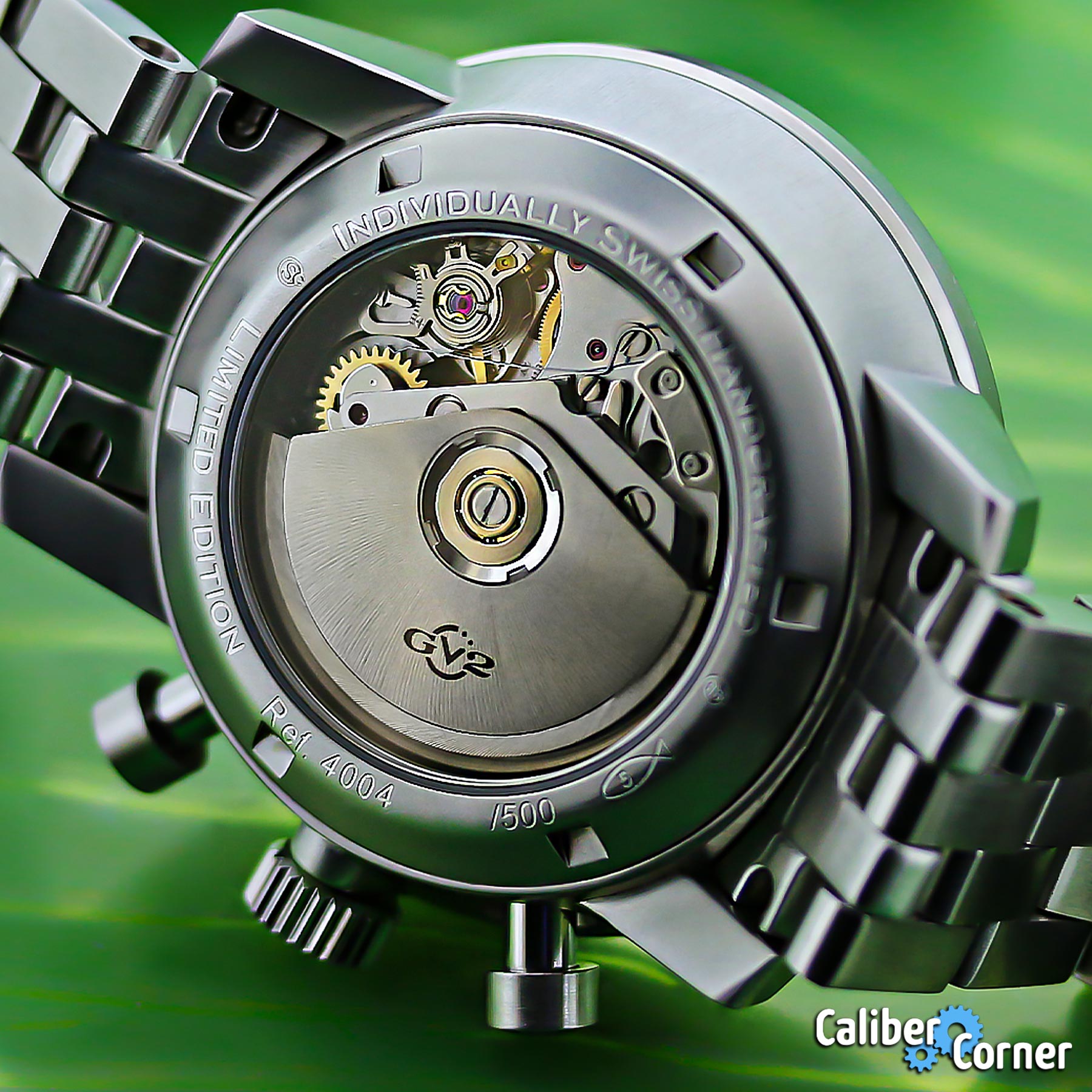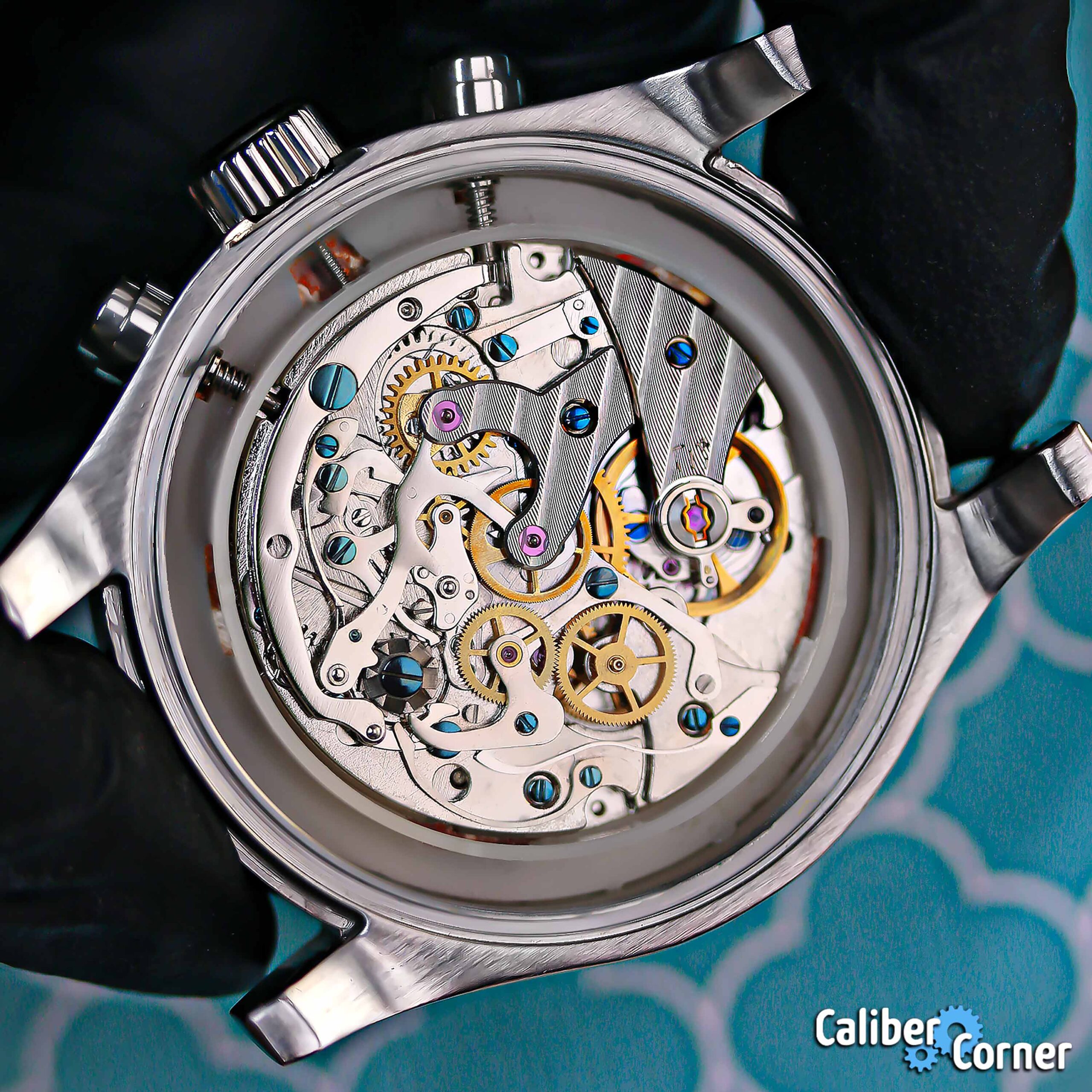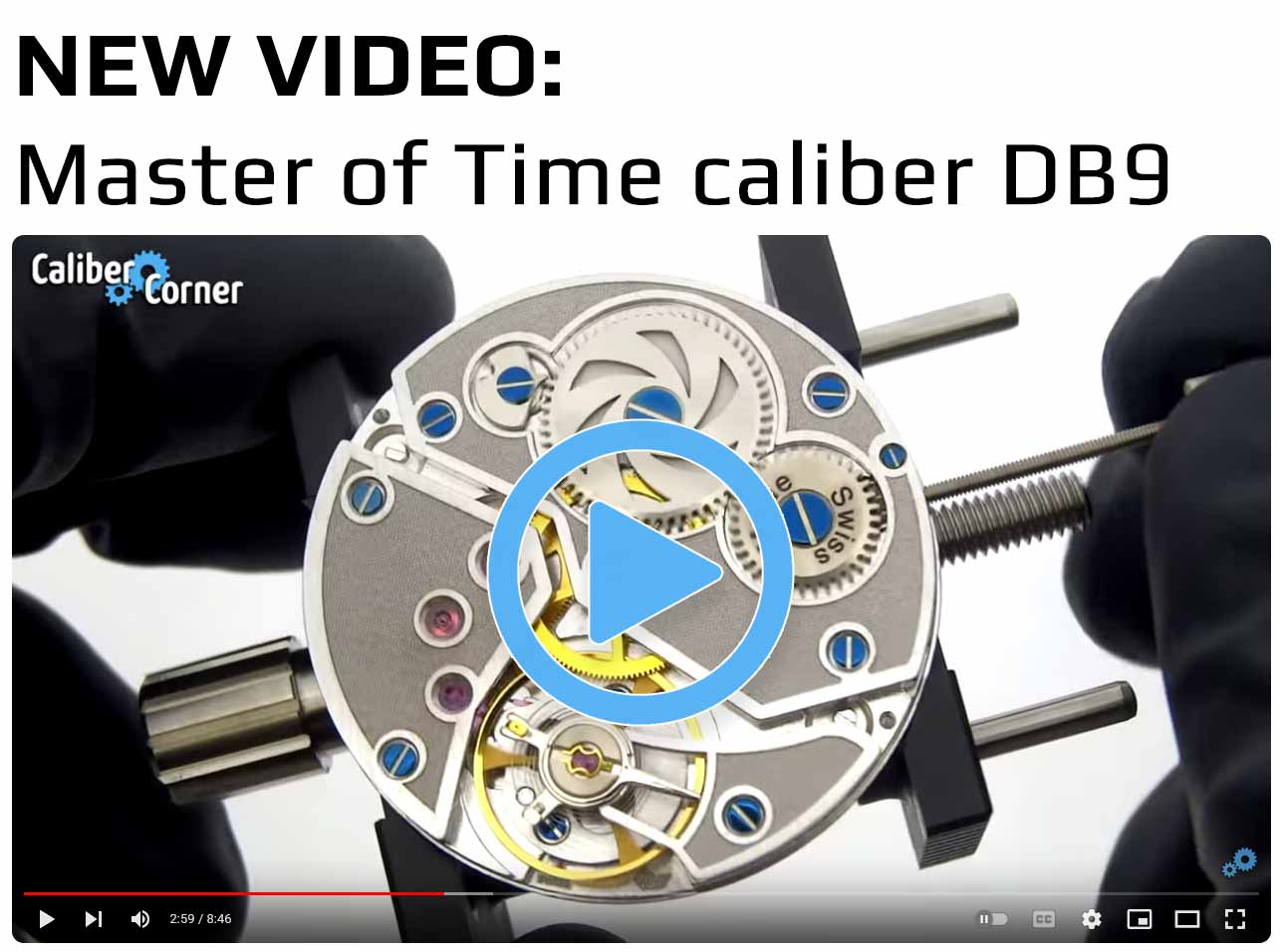| Manufacturer | ETA / Valjoux |
| Caliber Number | 7750 |
| Based On | Valjoux 7733 (manual wind) |
| Movement Type | Automatic |
| Jewels | 25 (see below) |
| Lignes | 13.25”’ |
| Diameter |
30mm |
| Height | 7.9mm thick |
| Power Reserve | ~48 hours |
| Vibrations Per Hour | 28,800 (4 Hz) – early models were 21,600 |
| Lift Angle | 49 degrees |
| Anti-Shock System | Incabloc |
| Regulator System | ETACHRON |
| Chronograph System | Three-plane cam style |
| Column Wheel? |
No |
| Rotor Type |
Ball bearing system |
| Rotor Winding Direction | Uni-directional (clockwise) |
| Hand Windable? |
Yes |
| Manual Winding Direction |
Clockwise |
| Hand Sizes |
2mm x 1.2mm x .25mm + 3 x .18mm (needs confirmed) |
| Features | Central hours; central minutes; central chronograph seconds; small seconds subdial at 9:00; 30 minutes counter at 12:00; 12 hours counter at 6:00; day-date at 3:00 |
| Hacking Seconds? | Yes |
| Country of Manufacture | Switzerland, Swiss made |
| Service Interval |
~5 years |
| Known Models | Breiting, Tag Heuer, IWC, Chronoswiss, Alpina, Sinn, Maurice Lacroix, Oris, Kobold Watches, Hamilton BelowZero, Gevril GV2 Chronograph, Baume et Mercier Formula S, Tockr Air Defender, Elysee Executive Flieger, Corum Bubble Chronograph, Compass Pathfinder (Too many to list! Please add yours to comments below…) |
The ETA/Valjoux caliber 7750 is one of the most recognizable and widely used automatic chronograph watch movements. It was based on the manual wind Valjoux caliber 7733, which itself was based on the Venus 188. Today, it is part of the “Mecaline” line of ETA movements. It was officially introduced t0 the watch world around 1973/1974 but after the first run was manufactured, the caliber wasn’t produced again until 1985 (thanks to mechanical timepieces gaining popularity once again). The 7750 was partially designed on a computer – a first for the watch industry. This was done by watchmaker and movement designer Edmond Capt at age 24 (read an interview with Capt here).
Official documentation for this calibre was updated as recently as August 23, 2016 (see below).
Some of the topics covered in this caliber listing:
Val 7750 vs ETA 7750:
Valjoux was a movement manufacturer that designed and produced the caliber 7750. Valjoux is now part of ETA. What used to be called the Valjoux 7750 is now called the ETA 7750, unless of course it is an original 7750 that was made by Valjoux before becoming part of ETA.
ETA officially calls it the “ETA 7750” on their tech sheets and drawings. Sometimes ETA also refers to it the “ETA 7750 Valjoux”. On Caliber Corner, we usually refer the these movements as ETA/Valjoux caliber 7750. Some watch brands refuse to call it the ETA 7750 and will list the movement as a Valjoux 7750 in their specs.
Brief History of Valjoux/ETA:
Valjoux (the name comes from Vallée de Joux) joined Ebauches SA (ESA) in 1944. ESA was acquired by SMH (Société de Microélectronique et d’Horlogerie). SMH, which was a combination of SSIH (Société Suisse pour l’Industrie Horlogère) and ASUAG (Allgemeine Schweizerische Uhrenindustrie AG), later turned into the Swatch Group (1985) and the absorbed Valjoux became part of ETA.
7750 Variations
As with other ETA movements, the 7750 is available in elabore, top, and chronometer grade. In addition to the base calibre 7750, the current lineup also includes the 7751, 7753, and 7754 variations.
- 7750 (12/6/9 subdials with day/date at 3)
- 7751 (12/6/9 subdials with central date hand, day/month at 12, moonphase at 6)
- 7753 (3/6/9 subdials with date at 4)
- 7754 (12/6/9 subdials with date at 3 and GMT hand)
There are also manual wind calibers 7760 (12/6/9 subdials with day/date) and 7765 (12/9 subdials with date).
Jewel Count:
Most modern examples of the caliber 7750 will have 25 jewels. The first versions had 17 jewels. There are other versions with 24 jewels.
Plastic Parts:
If you see plastic parts in your caliber 7750 watch movement, do not be alarmed. It does not mean you have a fake watch! The reset lever (stop lever) on the central chronograph wheel is constructed from plastic on many 7750s. Chronoswiss was the first watch company to start using a metal stop lever, which ETA subsequently began using as well. According to ETA, the parts made from plastic should not be cleaned during a service.
Day/Date:
Although the cal. 7750 was engineered to have a day/date calendar complication at 3:00, it doesn’t mean your watch will have either one. Some watch companies opt for a cleaner design without the day/date or with just a date.
7750 Clone Movements:
Since patent protection has expired on caliber 7750, other movement manufacturers have started to make their own version of the 7750. Sellita has the SW500 which is based on the 7750 and some of the Chinese companies are producing Chinese 7750 movements, for example the Shanghai 3LZF2.
7750 Chronograph Operating Instructions:
Pictured below is an image of a paper instruction manual for an ETA 7750 from 8-2-2005.

Setting the Time:
To set the time on your 7750 powered watch, pull the crown out two clicks to time-setting mode. If your watch is equipped with a screw-down crown, be sure to unscrew it first. With the crown in time-setting mode, turn it clockwise or counterclockwise to the desired time.
Setting the Calendar:
Extremely Important Note: Do not attempt to set the day or date on your watch while the hands are set between the hours of 7pm and 3am. You may see other sites say 10pm and 2am, but ETA officially states:
“Rapid date and day correction is not possible between 8 p.m. and 2 a.m.” -Source ETA 7750 Technical Communication, page 30 (see pdf below)
Just to be on the safe side, be as far out of that range as possible (just in case the hands weren’t installed exactly at 12am). If you set the day and day within those hours, the automatic calendar system is engaged to advance the datewheels to the next day and there is a chance to break something – even if nothing breaks, you may still cause the date to switch over at something like 6am rather than 12am.
To set the day/date on your 7750 watch read the extremely important note above first. Pull the crown out one click to calendar setting mode. Turn the crown clockwise (away from you) to set the date and counterclockwise (towards you) to set the day of the week.
Chronograph start/stop/reset:
Button sequence: Top, top, bottom.
- Top button: Start/Stop
- Bottom button: Reset
Chronograph Hand Lining Up:
Unlike quartz powered chronograph movements, mechanical watches do not have the luxury of using a reset sequence to get the chronograph hand to line up to 12:00. If your caliber 7750 powered watch has a hand that is not lining up, it could be a mechanical problem and should be inspected by a professional watchmaker. Your watch may need serviced or the hand might need to be reinstalled.
Is it OK to Leave the Chronograph Seconds Constantly Running?
It is not recommended to leave the central chronograph sweeping second hand in a constantly running or engaged state. With the way the gear train is set up on the 7750, this could add extra and unnecessary wear and tear. Additionally, by doing so your watch will experience a change in amplitude, leading to a loss of power reserve and accuracy.
Crown and Stem Removal:
To extract the stem from a 7750 based movement, pull the crown out two clicks to time-setting mode.
Look for the detent button near the crown. Gently press this down with your tool, and slide the crown/stem out. Do not use too much force to avoid damaging the setting lever/setting lever spring.
Examples of Watches with the Cal. 7750:
Below is a 7750 found in a Gevril GV2 chronograph watch:
The ETA/Valjoux in the photo below is from a Kobold Phantom Chronograph watch. It has a custom rotor decorated by the manufacturer.

The below example of the caliber 7750 is from a Hamilton BeLOWZERO Chronograph.
This ETA 7750 example was submitted by Detroit Watch Company of their DWC M1 Woodward exhibition caseback series.
Video of an ETA 7750 In Action:
Video of Disassembly and Reassembly of the Cal. 7750:
ETA 7750 Tech Sheets/Drawings (pdf):
Additional Resources:








 network of watch sites
network of watch sites














Recent Comments
Tactical Frog FXD2 Titan uses also VS75
There is something wrong with you. As said you don't see it. If you want…
Sekonda 26 jewel Slava 2427, does NOT hack :)
Hello! yes I need some help! I've left my contact details too, please let me…
The 3185 doesn’t actually have a quickset date in the traditional way. It has a…
Fears are using the G101: https://www.fearswatches.com/products/brunswick-40-silver
$14.900 is that a typo?